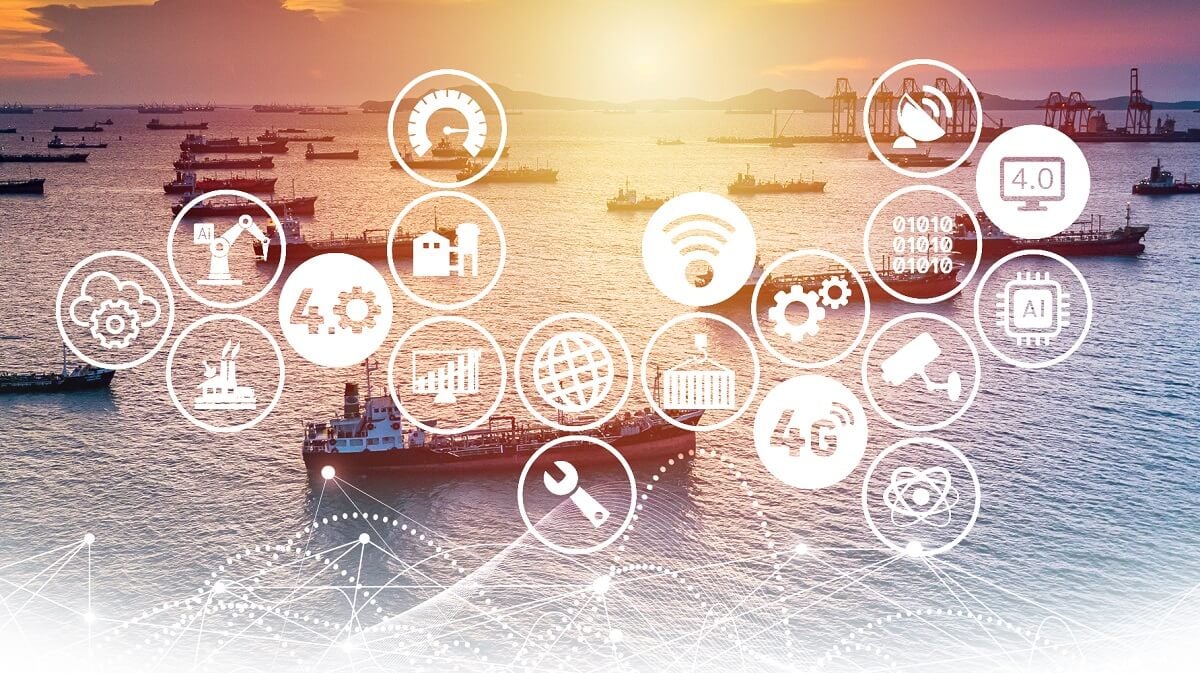Maritime Comms are Sailing at Speed on a Wave of Digital Developments
As the digital environment develops at break-neck speed, Erwan Emilian, Partner & Group CEO, IEC Telecom outlines the key changes and advises how they can benefit the maritime industry

The satellite communications industry is evolving at speed. We are witnessing a time of fast-paced development in the digital world which will ultimately benefit maritime users who embrace change and set a course towards this virtual horizon.
From an airtime-focused and margin-driven business, satcom is transforming into a As-a-Service-based industry where demand is no longer defined by Mbps alone. Instead the focus is switching to the variety and quality of applications this traffic may support, all embedded in a portfolio of managed services.
The near future will definitely be influenced by two important factors:
Firstly, Space X, OneWeb, Telesat, Viasat/Inmarsat, Intelsat, SES, and Yahsat/Thuraya have committed to expanding their services over the coming years. Having an increasing number of satcom players in the market will eventually lead to an oversupply of satellite services. This will result in airtime no longer being seen as a rare resource but rather as an essential element of a much wider communication infrastructure.
In fact, according to a Euroconsult forecast, the oversupply of satcom capacities will lead to a substantial fall in airtime prices, with an ARPU declining by 21 percent between 2022 and 2028. The development of IoT (Internet of Things), blockchain and artificial intelligence (AI) has set high expectations for future consumption resulting in the record development of the global orbital infrastructure. In 2020 alone, the industry witnessed 1,200 LEO satellite launches with a further 1,400 in 2021.
Secondly, the ‘Metaverse’ (a virtual-reality space in which users can interact with a computer-generated environment and with other users) is no longer a futuristic concept but is fast becoming reality. The expectations of what can be achieved by connectivity, particularly among the workers of tomorrow – Generation Z and those to follow – are anticipated to increase exponentially. They expect to be connected anytime, anywhere. And as these workers progress into managerial roles, they will require these levels of connectivity to be available and utilized in the workplace, not just in the leisure environment.
In this ever-evolving landscape, maritime connectivity specialist IEC Telecom is gradually shifting its focus from the material world (hardware) to a virtual space (via an innovative range of applications and digitally-driven services) provided on an As-a-Service mode. Moving incrementally in this direction, the company is pursuing a goal to one day create an IEC Telecom-powered AI platform, capable not only of processing and transferring data, but also of generating operational suggestions for human decision-makers.
 So what does the shipping industry need to do to keep pace with all this change and to benefit from what is now possible?
So what does the shipping industry need to do to keep pace with all this change and to benefit from what is now possible?
The key to successfully maximizing your satcom system is to have a future-oriented philosophy. For our own part, we understand that today it no longer makes sense to develop solutions solely based on current market demands. Any development we undertake today needs to target the requirements that our customers will have in five to ten years’ time.
At IEC Telecom, we’re committed to keeping our customers connected – in the way that they want to be connected and at the flexibility and cost that works best for their operations. We’re able to do this with our strong global network that supports our strategic vision and complements our efforts to bring a truly unique and unparalleled communications experience to our customers. We work closely with each customer to deliver satcom solutions that address their specific needs and our value-proposition even stretches into making current solutions future-ready so that their investment into satcom is cost-effective and lasting. This integrated approach of in-house design and engineering expertise has translated into solid relationships with our customers, making IEC Telecom their ‘go-to’ for value-added satcom services.
It's also important to realize that the pace of corporate IT evolution is influenced by the ability of users to grasp new technology and fully understand how it benefits them – and to see these benefits in operation. When we develop our satcom solutions we keep the customer’s requirements front and centre – however quickly they evolve. This bespoke development experience is a cornerstone of our approach no matter where we deliver our services.
The traditional boundaries of satcom have already been expanded through the wide range of market-specific applications which enable comms systems to be customized and their use to be maximized. VSAT is no longer used exclusively for corporate communications and crew welfare. The key factor is in fast evolution mode (flat panels) and anyone can use a VSAT with high throughput service. New services such as remote maintenance are now available via satcom channels.
Onboard connectivity as a system is also becoming increasingly more complicated. A large vessel’s network typically comprises of four WANs: VSAT, L-band, GSM and GMDSS. The possibility to monitor traffic, set consumption limits and access levels, is crucial to avoid a bill shock at the end of the month or congestion at critical moments.
Staying connected is not only a matter of safety and efficiency, but also budget optimization. Weather forecasts and corporate communications received in time can help to optimize vessel routes and subsequently decrease fuel consumption, as well as avoid unnecessary port entries – all in all, decreasing operational expenses by 20-30 percent.
Cost savings have become particularly important today when shipping fleets emerging from the pandemic are looking for ways to maximize revenues to cover for lost business. The global maritime trade is estimated to have plunged by 4.1 percent due to the pandemic in 2020, according to UNCTAD, with $1.7 billion in lost revenue.
In this context, network management systems, such as OneGate from IEC Telecom, have become central to onboard connectivity. This technology enables automated failover at least cost routing, meaning that, at each given moment, a vessel can utilize traffic over the most competitive channel. Moreover, the captain can remain fully aware of the network status via OptiView, OneGate’s network management dashboard, and, if needed, can overrule the default settings.
Videoconferencing is now commonplace onboard large vessels, yet using regular telecom applications, such as Zoom or MicroSoft Teams, requires a bandwidth of at least 500Kbps. Not only does this affect monthly expenses, but it also limits the availability of video calls to a VSAT channel only. Again the satcom industry has developed solutions, meaning that today it is now possible to run such applications in a low bandwidth environment. For instance, IEC Telecom’s OneTeam videoconferencing app requires as little as 40-80 Kbps, meaning it remains fully operational even over L-band.
Videoconferencing is not only a facilitator of business communication and crew welfare, it is the driving force behind a whole new range of smart services, including telemedicine, e-learning and remote maintenance. The need for remote maintenance has grown exponentially, particularly in response to the pandemic. Travel restrictions and social distancing presented obstacles to vessel maintenance and upgrades and crew were faced with unfamiliar technical challenges. With the help of solutions, such as IEC Telecom’s OneAssist, they are able to access real-time expert advice over a digital channel. Using smart goggles, a helmet-mounted camera, or even with their own smartphone, seafarers can conduct multi-party video and audio calls for easy, hands-free collaboration, and access specialist guides and manuals without fear of the link crashing or bandwidth being exceeded. As well as benefiting operational efficiency, saving time and money, this also aids onboard safety.
Traditionally, L-band has been used as a back-up channel for emergency communications. Today, thanks to optimized applications, crew can continue to enjoy a full spectrum of telecommunication services even if the main network is down. Notably, with the expanded functionality of the back-up channel, the technical team can hold troubleshooting sessions and even fix VSAT network errors remotely. As a result, the importance of an efficient L-band network infrastructure is turning into the pivotal element of an onboard business contingency plan.
With such incredible advances in digital technologies and the immense benefits of onboard digitalization, in both high and low bandwidth environments, the crew efficiency and operational continuity are all but assured and businesses can confidently navigate their future competitive landscape. Keep an eye on that horizon – with IEC Telecom’s value-added As-a-Service options, the future is closer than you think!
Erwan Emilian is Partner & Group CEO at IEC Telecom.
This article is sponsored by IEC Telecom Group, one of the leading international satellite service operators. Renowned for supplying high quality satellite-based solutions to customers for more than 25 years, we deliver efficient end-to-end voice and data services when and where it matters most. We are committed to enabling digitalization for the maritime industry as well as remote units on land, where GSM coverage is not available. For urban networks, we provide a powerful satellite back-up to ensure the business continuity of customer enterprises.
The opinions expressed herein are the author's and not necessarily those of The Maritime Executive.
